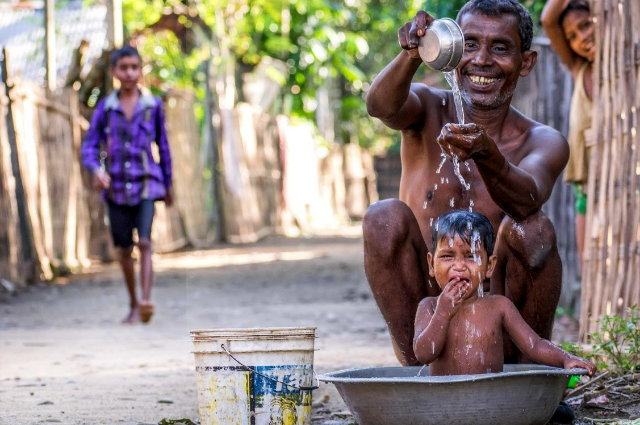
Photo by sudip paul / pexels
Introduction
This legal analysis delves into the historical context, geographic aspects, targeted violence against women, the role of rumors, the government's response, and the political landscape while exploring relevant Indian laws and past examples to provide a comprehensive understanding of the issue and potential legal solutions.
Historical Background and Legal Perspectives
Examining the historical context is vital to understand the legal dimensions of the Meitei-Kuki conflict. Historically, Manipur was an independent princely state and later became a part of India after its independence in 1947. Legal scholars must explore historical treaties, agreements, and administrative decisions that shaped territorial divisions, resource allocation, and political representation for both communities. The Manipur Merger Agreement and other related documents can provide insights into past injustices and unequal treatment, potentially offering legal avenues for addressing grievances.
Geographic Divide and its Legal Implications
The geographic distribution of the Meitei and Kuki communities is central to the conflict. The hills and valleys of Manipur have distinct cultural, historical, and geographical significance for both communities. Legal experts must examine land ownership rights, resource use, and environmental laws in these regions, as they have historically contributed to tensions and resource-based disputes. Relevant Indian laws, such as the Forest Rights Act, can be evaluated to determine legal mechanisms for establishing equitable resource-sharing arrangements and addressing land-related conflicts.
Targeting Women: Legal Dimensions of Gender-Based Violence
The use of rape and sexual assault as instruments of violence presents grave legal implications. International human rights law and Indian laws on gender-based violence must be scrutinized to hold perpetrators accountable and protect victims. The Protection of Women from Domestic Violence Act and the Criminal Law (Amendment) Act are essential legal tools in addressing violence against women. Legal measures to ensure access to justice, reparations, and support for survivors are crucial in breaking the cycle of violence against women.
Role of Rumors and Misinformation: Legal Challenges
Misinformation and rumors have historically played a role in fueling the escalation of violence in the region. Legal experts must explore Indian laws pertaining to hate speech, incitement, and the spread of false information while examining the effectiveness of existing legal frameworks in countering such narratives. Relevant provisions of the Indian Penal Code, such as Section 153A and Section 505, can be analyzed to curb the dissemination of harmful falsehoods and promote accurate reporting, thereby mitigating the impact of misinformation on the conflict.
Government Response: Legal Accountability and Prompt Action
The delayed response of the central government has raised questions about its legal obligations in addressing the conflict. Legal scholars must evaluate the state's duty to protect its citizens, the role of security forces in maintaining peace, and mechanisms for swift and effective responses to emerging crises. The Armed Forces Special Powers Act (AFSPA), which is in force in certain parts of Manipur, has been a subject of controversy. Legal implications of its application, including alleged human rights violations, must be examined. Potential legal consequences for inadequate responses and remedies for victims should be analyzed.
Political Landscape and Legal Equality
The political dynamics within Manipur, especially the disproportionate representation of the Meitei community, warrant a legal examination of electoral systems, political processes, and minority rights. Legal experts must assess constitutional provisions for fair representation and potential legal remedies to ensure equal political participation and representation for all communities. The Scheduled Tribes and Other Traditional Forest Dwellers (Recognition of Forest Rights) Act can be explored to safeguard the rights of tribal communities, including the Kukis.
Escalating Violence and Humanitarian Crisis: Legal Protections
As violence persists, understanding the legal protections afforded to civilians under international humanitarian law and domestic legislation becomes imperative. Legal mechanisms to safeguard the rights of internally displaced persons and access to essential services, humanitarian assistance, and protection during armed conflicts should be explored. The principles of international humanitarian law, as well as relevant Indian laws, can guide efforts to ensure the safety and well-being of civilians caught in the crossfire.
Past Examples and Lessons Learned
Past conflicts in Manipur, such as the Naga-Kuki clashes in the 1990s, provide valuable lessons for understanding the complexities of ethnic conflicts in the region. Legal analyses of how those conflicts were resolved, or their ongoing implications, can inform strategies to address the current Meitei-Kuki conflict. Implementing restorative justice measures, as seen in the case of the Naga-Kuki clashes, may offer insights into potential paths towards reconciliation.
Possible Solutions: Legal Frameworks for Reconciliation
Legal scholars must collaborate with stakeholders to explore legal avenues for reconciliation and sustainable peace. Legal mediation, truth and reconciliation commissions, and transitional justice mechanisms should be considered to address historical grievances and foster inter-community dialogue. Past peace agreements in other regions of India and around the world can serve as models to inform potential legal frameworks for resolving the Meitei-Kuki conflict.
Conclusion
The Meitei-Kuki conflict in Manipur presents a multi-faceted challenge that requires a comprehensive legal analysis and multi-dimensional solutions. By engaging with historical contexts, international human rights principles, domestic laws, and past examples, we can identify potential avenues for conflict resolution, promoting justice, and ensuring lasting peace. A concerted effort by governments, legal authorities, community leaders, and civil society is essential to unravel the ethnic quagmire and pave the way for a harmonious and inclusive Manipur. Legal tools and mechanisms can play a crucial role in addressing grievances, ensuring accountability, and facilitating meaningful reconciliation for the benefit of all communities in the region.
